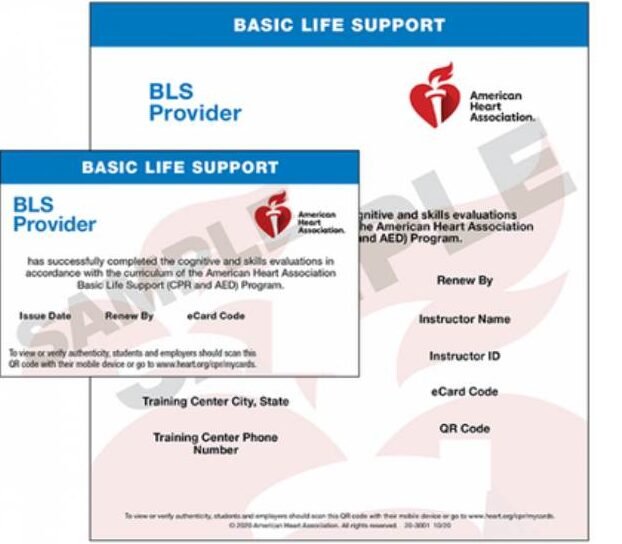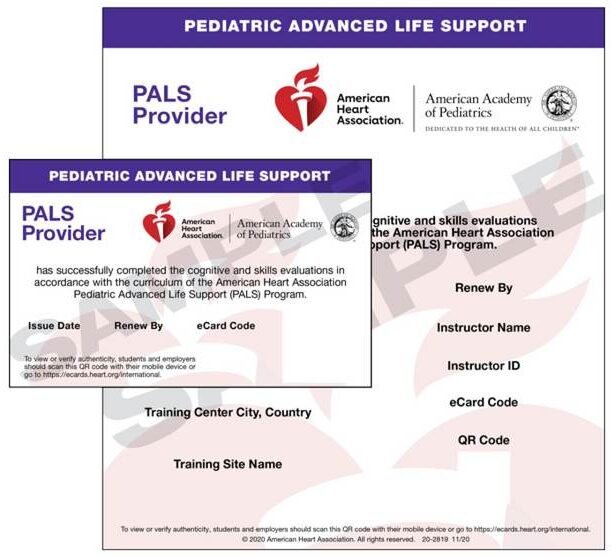Technology is reshaping the way we understand and track heart health, making advanced monitoring more accessible, more accurate, and far more patient-friendly than ever before. What once required a clinic visit and bulky equipment can now happen on a wrist, through a discreet patch, or even inside the body. These innovations not only capture detailed heart data in real time but also give people confidence, early warnings, and stronger connections to their care teams. As tracking becomes easier and more integrated into everyday life, more people can stay informed, take action sooner, and protect their heart health with far less stress.
The Evolution of Heart Monitoring Technology
Heart monitoring has progressed dramatically over the last century. What began as early experiments in imaging and rhythm recording has evolved into smart, connected devices capable of continuous, real-time insight.
1. Early Discoveries in Cardiac Monitoring
The path began in 1895 with the discovery of X-rays, which for the first time allowed physicians to view the heart’s size and position. In 1901, Willem Einthoven introduced the first functional electrocardiograph, a breakthrough that made it possible to record the heart’s electrical activity. By 1909, ECGs were being used in hospitals to diagnose arrhythmias. Soon after, in 1910, clinicians learned how to identify early signs of heart attacks based on electrical patterns.
Decades later, in the 1960s, Norman Holter developed a portable heart monitor that changed everything. Instead of capturing only a few seconds of rhythm, doctors could now evaluate full days of activity and detect intermittent issues more effectively.
Also, Read: ECG Rhythms Recognition and Interpretation for ACLS
2. The Rise of Portable and Ambulatory Devices
By the late 1970s, Holter monitors had become smaller and more practical for daily use. During the 1980s, wearable ECG devices gained popularity, giving patients the freedom to move while still gathering accurate data. The introduction of event monitors followed, special devices that recorded only when abnormal rhythms occurred. These innovations made outpatient cardiac evaluation more accessible and less intrusive.
3. Digital Integration, Wireless Connectivity, and Data Sharing
Heart monitoring took another leap forward in the 1990s and 2000s as analog ECG machines transitioned to digital formats. Digital systems improved precision, storage, and sharing. Wireless telemetry then enabled clinicians to receive real-time information from patients at home or in hospitals.
By the 2010s, consumer wearables like smartwatches incorporated heart-rate sensors and simple ECG capabilities, putting everyday heart monitoring into the hands of millions.
4. Today’s Innovations and Tomorrow’s Possibilities
Today, AI-powered tools analyze rhythm data and detect subtle changes that may be invisible to the human eye. Implantable loop recorders, smart pacemakers, and sophisticated digital platforms offer continuous tracking for months or years. Looking ahead, non-invasive sensors and advanced analytics may provide even more personalized insights, making early detection and proactive care the norm.
Wearable Heart Monitoring Devices
Wearable heart-monitoring devices have redefined what continuous tracking looks like. Instead of electrodes and wires, people can now rely on compact tools that blend seamlessly into their daily lives.
1. Smartwatches and Fitness Trackers
Modern smartwatches and fitness trackers use optical sensors to measure heart rate and can often perform single-lead ECGs to check for irregular rhythms such as atrial fibrillation (AFib). These devices alert users when patterns look unusual and can sync with apps to store readings, share reports with clinicians, or track long-term trends.
Beyond heart rate, these wearables often monitor sleep, activity, stress, and overall wellness. This broader context can help users make lifestyle changes that support heart health.
2. Medical-Grade Wearables
For people who need more precise monitoring, medical-grade devices, such as chest straps, adhesive patches, or specialized sensors-deliver clinical-quality data. These tools offer continuous ECG recording and often connect to remote monitoring platforms for physician oversight. They are particularly valuable for detecting intermittent arrhythmias and evaluating patients after cardiac treatments or procedures.
Together, consumer wearables and medical-grade monitors make heart-health engagement more accessible and accurate than ever before.
Patch-Based Monitors and Wireless ECG Devices
Patch-based and wireless ECG monitors have become popular alternatives to traditional Holter monitors. These sleek, adhesive devices stick directly to the chest and collect data for extended periods, sometimes up to 14 days or longer.
Key Benefits:
- Compact and Comfortable: Sleek, adhesive patches conform to the body, reducing discomfort and skin irritation compared to bulky Holter devices.
- Extended Monitoring: Capable of recording ECG data continuously for longer periods, increasing the likelihood of detecting transient or short cardiac events.
- Improved Patient Compliance: Easier to wear during daily activities, leading to higher adherence and more reliable data.
- Advantages Over Traditional Holter Monitors:
- Wireless data transmission allows for remote monitoring and faster physician review.
- Reduced setup complexity and fewer wires enhance mobility.
- Often paired with smartphone apps for real-time symptom tracking and event marking.
Remote Patient Monitoring (RPM) and Telehealth Integration
Remote Patient Monitoring (RPM) has brought cardiac care directly into patients’ homes. Devices such as wearables, patches, and implantable monitors continuously collect data on heart rate, rhythm, and other vital signs. This information is securely transmitted to healthcare providers through RPM platforms.
Telehealth integration gives clinicians an immediate way to respond. If an irregular rhythm appears, the care team can schedule a virtual visit, adjust medication, or recommend further testing, without waiting for the next appointment.
This model reduces unnecessary hospital visits, enhances communication, and helps clinicians track trends over time. Both patients and providers benefit from earlier interventions and more informed decision-making.
Artificial Intelligence (AI) and Predictive Analytics
AI is becoming one of the most transformative components of modern heart tracking. Its ability to process large amounts of data quickly and accurately makes it ideal for detecting issues early and predicting potential risks.
1. Early Detection of Arrhythmias and Subtle Abnormalities
AI systems excel at identifying irregular rhythms, even when changes are minimal or symptoms are absent. This early insight helps clinicians intervene before conditions worsen, reducing risks and improving outcomes.
2. AI Algorithms Analyzing Continuous Data Streams
Wearables and implantable devices generate thousands of data points every second. AI filters out irrelevant noise, highlights meaningful patterns, and adapts to the individual’s normal rhythm. This targeted analysis contributes to fewer false alarms and more reliable results.
3. Predictive Models for Cardiac Events
Advanced predictive analytics can estimate the likelihood of events such as atrial fibrillation, heart failure progression, or sudden cardiac episodes. Instead of responding after symptoms occur, clinicians can take proactive steps, adjusting treatment plans or recommending lifestyle changes before a problem escalates.
Mobile Apps and Patient Empowerment
Mobile health apps act as a bridge between devices and users, giving patients tools to understand and engage with their heart health more actively.
1. Personalized Dashboards and Health Tracking
Apps translate complex readings into easy-to-understand visuals. Patients can review heart-rate trends, ECG samples, sleep patterns, and activity levels. This transparency helps people recognize patterns and make informed decisions between visits.
2. Real-Time Alerts and Symptom Logging
Immediate alerts notify users of irregular rhythms or concerning changes. Many apps also allow symptom logging, giving clinicians a richer context during follow-ups. This helps reduce missed signals and supports quicker adjustments to treatment.
3. Medication Reminders and Lifestyle Support
Tools like medication reminders, guided breathing exercises, and stress-management programs encourage consistent, healthy habits. Some apps use gamification, badges, streaks, or challenges to increase engagement and long-term adherence.
Implantable Devices and Advanced Monitoring
Implantable cardiac devices take monitoring beyond what wearables can achieve. These tools provide precise, long-term insight without requiring daily management.
1. Implantable Loop Recorders (ILRs)
ILRs are tiny devices placed beneath the skin to monitor heart rhythms for months or years. They are ideal for diagnosing unexplained fainting episodes, sporadic arrhythmias, or intermittent symptoms that are difficult to capture with short-term monitors.
They automatically record irregular rhythms and can be manually activated by patients. The collected data is shared with care teams to support accurate diagnoses.
2. Smart Pacemakers & (ICDs)
Modern pacemakers and implantable cardioverter defibrillators do much more than regulate heart activity. They also track detailed rhythm data, pacing activity, and changes that may signal worsening heart failure. These devices connect wirelessly to home monitoring systems, allowing clinicians to stay updated without frequent office visits.
3. Long-Term Benefits in Patient Management
Because implantables provide continuous, highly accurate data, they enable clinicians to make more personalized, timely treatment decisions. For patients, these devices improve safety and reduce uncertainty.
Data Security and Privacy Considerations
As heart monitoring technology becomes more advanced, protecting patient information is more important than ever.
1. Safeguarding Sensitive Health Data
Heart monitors gather vast amounts of personal data. Encryption, secure servers, and strong data-handling protocols help ensure that this information stays protected.
2. HIPAA Compliance and Medical-Grade Standards
For medical devices and healthcare organizations, HIPAA compliance sets strict requirements for storing and transmitting patient information. These protections maintain patient trust and ensure responsible data management.
3. Transparency and User Control
Many platforms now clearly outline what data is collected and how it’s used. Patients often have the ability to limit or revoke sharing permissions, giving them greater control over their information.
4. Cybersecurity Challenges
As more devices connect to the internet, cybersecurity risks increase. Regular software updates, secure authentication, and routine audits are essential to maintaining safe and trustworthy systems.
Challenges and Limitations of Modern Heart Monitoring Tech
While modern heart monitoring offers many advantages, it also comes with limitations that should be understood.
1. Technical and Data-Related Challenges
- Accuracy and Reliability: Some devices struggle to give consistent results, especially during movement or poor sensor contact. This can lead to missed issues or false alerts.
- Data Overload: Modern monitors collect huge amounts of information that can overwhelm both patients and providers. Sorting out what truly matters takes time and skill.
- Analytical Challenges: Even advanced systems can misinterpret signals or overlook subtle changes. This makes careful clinical review essential for safe decision-making.
2. Patient Related Challenges
- Health Anxiety: Constant alerts or unfamiliar readings can cause worry. Many people feel stressed when they do not fully understand the numbers they see.
- Digital Literacy and Access: Not everyone feels comfortable using apps or smart devices. Some people lack internet access or compatible phones, which limits the benefits of remote monitoring.
- User Error: Simple mistakes like improper device placement or forgetting to sync data can affect accuracy. These errors often lead to unclear or incomplete results.
3. Clinical and Systematic Challenges
- Clinical Integration: Healthcare teams need time and tools to bring new monitoring data into existing workflows. Without good systems, valuable information can get lost.
- Privacy Concerns: Patients worry about who can see their health data. Keeping information secure requires strong protection and clear communication.
- Lack of Clinical Infrastructure: Some clinics do not have the resources, staff, or technology to support continuous tracking. This slows adoption and limits access to modern tools.
The Future of Cardiac Monitoring
The future of cardiac monitoring looks bright as new tools make it easier to understand and protect our hearts. Smarter technology can now spot early warning signs, while smaller devices offer comfort without getting in the way of daily life. With everything connected, people and care teams can stay in touch and respond faster. These advances also open the door to more personal guidance, helping each person get the support that fits their needs. As prevention becomes a bigger priority, this evolving technology is changing how we watch for trouble, make clear diagnoses, and give patients more confidence in their own care.












